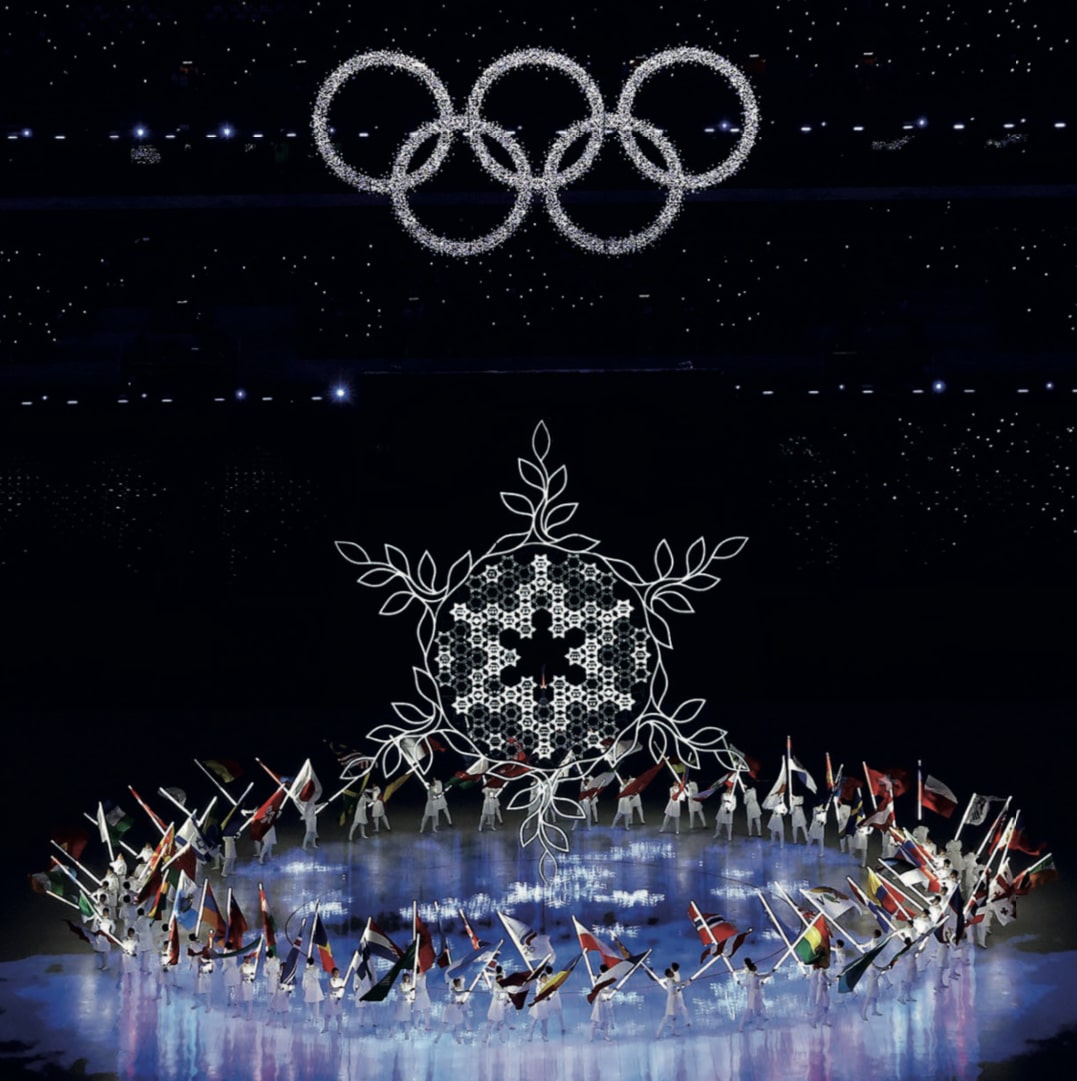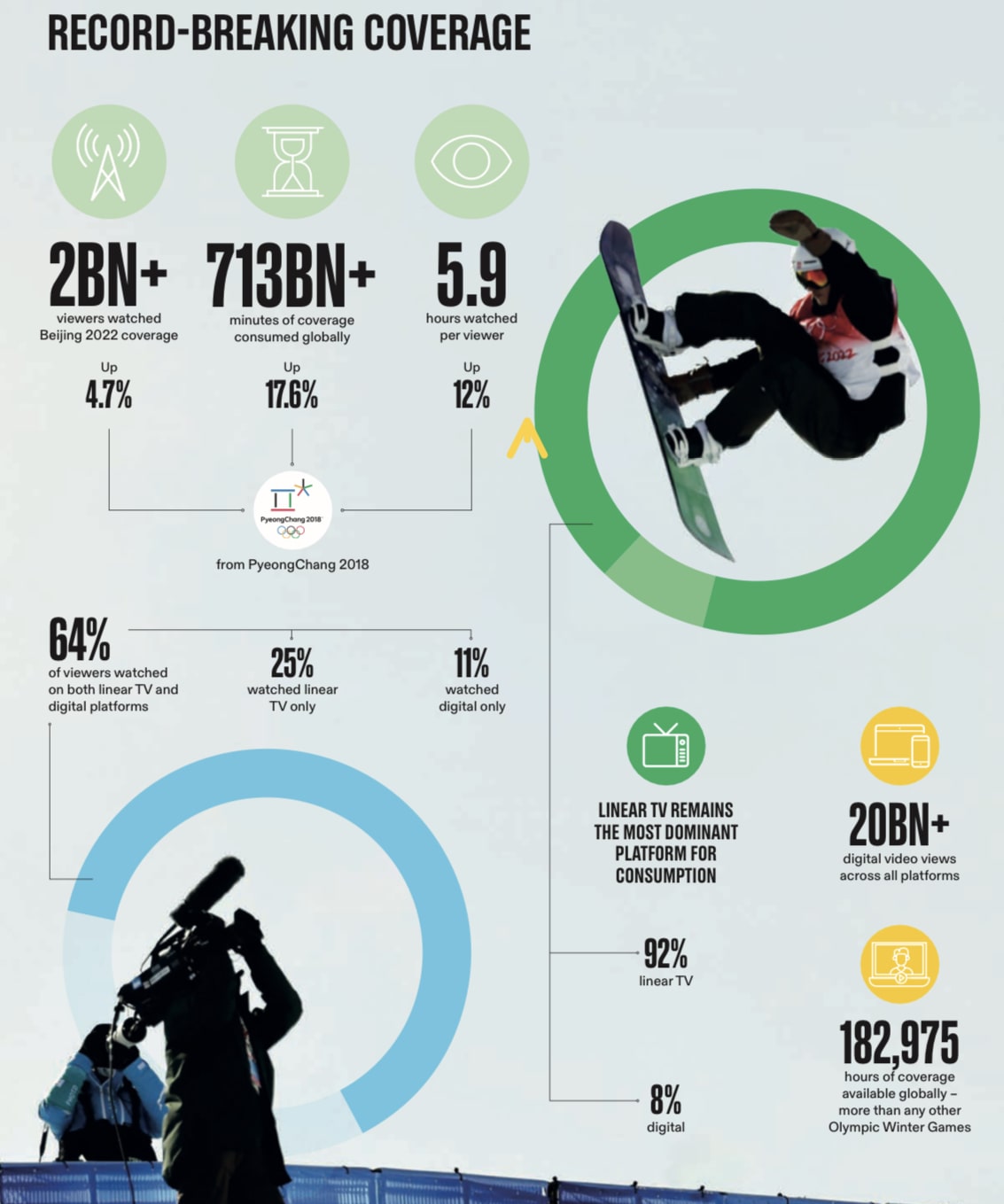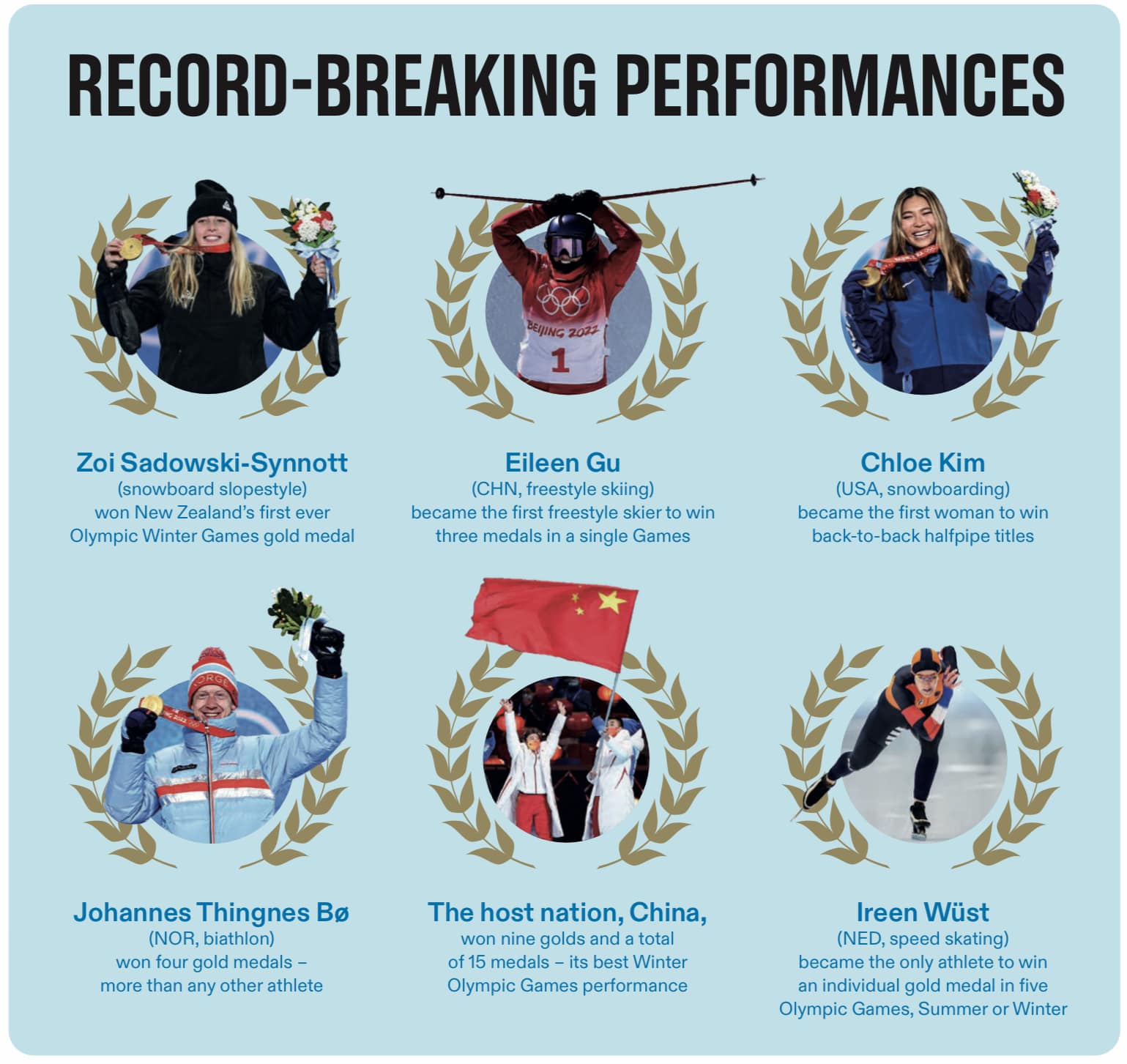
The International Olympic Committee ’IOC’ released its marketing report on the Beijing 2022 Winter Olympics this week. The report analyzed the Winter Games from a commercial angle and celebrated sporting achievements. The IOC is a privately funded organization that relies on commercial partners’ contributions to stage Olympic Games. Selling media rights is the single most important source of revenue for the IOC, contributing 61% of revenues for this Olympic cycle.
- Related: United Kingdom Cuts Snowsports Funding After ‘Disappointing’ Performance in Beijing Winter Olympics
Despite Covid-19, the 2022 Winter Olympics were a huge commercial success. Thomas Bach, President of the IOC, shared that a total of 2.01 billion unique viewers tuned in to watch coverage of this year’s Winter Games Beijing, both on TV and digital platforms. This represents a 5% increase in viewership compared to PyeongChang in 2018.
The Olympic’s online platforms generated 68 million unique viewers this year, more than double that of four years ago. Olympic social media registered 3.2 billion engagements, which is also a sign of the shift in how consumers access Olympic coverage. “During Beijing 2022, we saw that the trend towards digital consumption of broadcast coverage is not only continuing – it is accelerating at record-breaking pace,” Thomas Bach was quoted.
Not only did the numbers of viewers increase, but the amount of time spent watching also was up. Viewers worldwide watched on average 5.9 hours, representing an 18% increase over the last games in PyeongChang.
US viewers streamed more than 4.4 billion minutes of coverage, NBCUniversal, who held the rights to broadcast the Beijing Winter Olympics, disclosed. A staggering 166 million Americans tuned in to watch the Olympics. This makes Beijing the most watched Winter Games in the US on record.” Nothing captivates Americans for 18 consecutive days and nights like the Olympic Games,” stated Mark Lazarus, Chairman of NBCUniversal Television and Streaming.

The second most significant source of revenue for the IOC comes from its official partners, called ‘TOP,’ short for The Olympic Partners. These partners receive exclusive marketing rights for the Olympics and include multinationals such as Coca-Cola, Allianz, Procter & Gamble, and Visa. The TOP program contributed $2.3 billion in revenues.
90% of the funds raised are flowing straight back to the sport. These funds are spent directly on developing sports through investments in national sports organizations and athletes. The importance of the Olympics for athletes was emphasized in a survey conducted during the Beijing Games. 91% of athletes stated that their motivation to participate was “to compete at the biggest multi-sports event on earth,” and 90% stated that they were motivated by their desire “to represent their country.”
The Olympic Games certainly can bring people together, and we hope that the Winter Games will continue to attract as much interest as they did this year, as it will help the funding of these sports.





